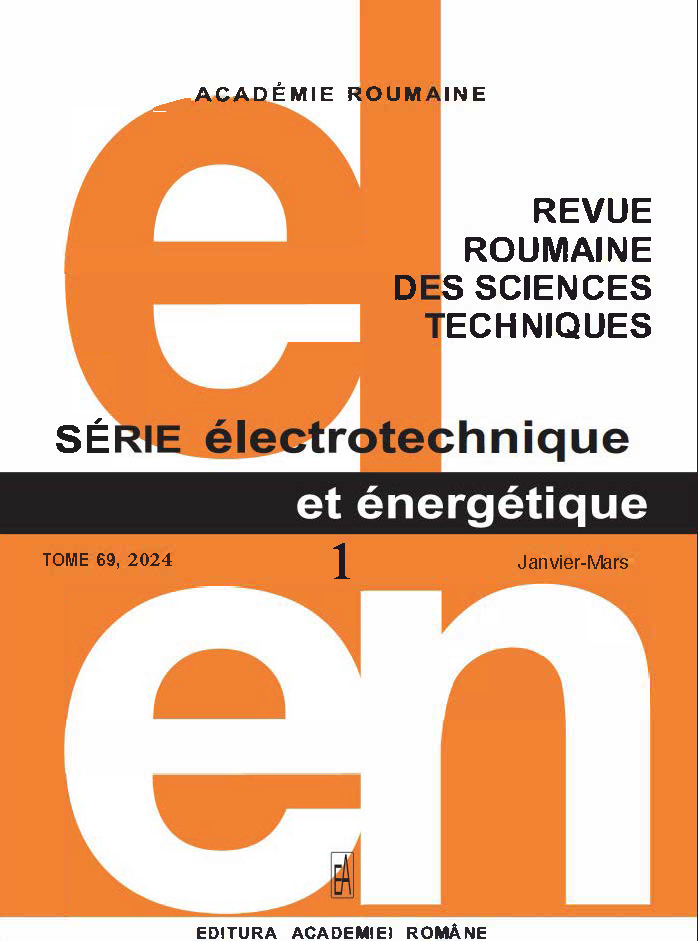BESOINS ET DÉFIS D’INTÉGRATION POUR UNE TRANSFORMATION VERTE ET INTELLIGENTE DE L’INDUSTRIE PORTUAIRE BASÉE SUR DES DONNÉES MULTI-SOURCES
DOI :
https://doi.org/10.59277/RRST-EE.2024.1.13Mots-clés :
Transformation portuaire, Le développement durable, Analyse géographique, Province de JiangsuRésumé
Cette recherche explore les besoins et les défis d’intégration pour parvenir à une transformation verte et intelligente dans l’industrie portuaire, en tirant parti des données multi-sources et des technologies de l’information géographique. L'étude utilise des données complètes, notamment des informations provenant du système national d'information sur le crédit aux entreprises, du service national de catalogue d'informations géographiques et des cartes du réseau routier de la province du Jiangsu en Chine. Des méthodes d'analyse géographique, telles que l'estimation de la densité pondérée du noyau et l'analyse des ellipses d'écart type, sont utilisées pour identifier les modèles de répartition spatiale et les changements dans le secteur des services portuaires et maritimes. Les résultats indiquent un modèle de distribution spatiale avec une faible expansion à partir du centre, dans la direction « nord-ouest-sud-est ». Des défis tels que la gestion décentralisée et la concurrence pour les intérêts entravent l’intégration portuaire pour le développement durable. En comprenant la dynamique spatiale, les décideurs politiques peuvent prendre des décisions éclairées pour un secteur portuaire plus vert, plus intelligent et plus efficace.
Références
(1) S. Chan, Inter-regional development in China: An assessment, Journal of Infrastructure, Policy and Development, 5, 1, pp.1270 (2021).
(2) Y. Zhang, J. Dai, B. Chen, K. Chen, Correlation between economic and industrial demand and scientific innovation: a case study of thermodynamics discipline statistics of National Natural Science Foundation of China, Journal of Thermal Analysis and Calorimetry, 144, 6, pp. 2347–2355 (2021).
(3) J. Li, S.C. Lee, An empirical analysis on the performance of the port logistics industry and cluster: a focus on Jiangsu coastal areas, Journal of International Trade & Commerce, 13, 5, pp. 67–91 (2017).
(4) Q. Yuan, X. Teng, S. Tu, B. Feng, Z. Wu, H. Xiao et al., Atmospheric fine particles in a typical coastal port of Yangtze River delta, Journal of Environmental Sciences, 98, pp. 62–70 (2020).
(5) L. Song, Addressing value conflicts for the new Maritime Silk Road: Sustainable and responsible cost–benefit analysis in the Port of Shanghai. Out of China: Responsible Port Innovation along the 21st Century Maritime Silk Road, pp. 181 (2021).
(6) R. Xu, L.C. Chou, W.H. Zhang, The effect of CO2 emissions and economic performance on hydrogen-based renewable production, 35th European Countries. International Journal of Hydrogen Energy, 44, 56, pp. 29418–29425 (2019).
(7) M. Chen, W.H. Zhang, Purchase intention for hydrogen automobile among Chinese citizens: The influence of environmental concern and perceived social value, International Journal of Hydrogen Energy, 46, 34, pp. 18000–18010 (2021).
(8) H.C. Lin, L.C. Chou, W.H. Zhang, Cross-Strait climate change and agricultural product loss, Environmental Science and Pollution Research, 27, 12, pp. 12908–12921 (2020).
(9) N. Nasrabadi, A. Dehnokhalaji, P. Korhonen, B. Lokman, J. Wallenius, Robustness of efficiency scores in data envelopment analysis with interval scale data, European Journal of Operational Research, 297, 3, pp. 1151–1161 (2022).
(10) Y. Bai, L. Chou, W. Zhang, Industrial innovation characteristics and spatial differentiation of smart grid technology in China based on patent mining, Journal of Energy Storage, 43, pp. 103289 (2021).
(11) W.H. Zhang, Q. Yuan, H. Cai, Unravelling urban governance challenges: Objective assessment and expert insights on livability in Longgang District, Shenzhen, Ecological Indicators, 155, pp.110989 (2023).
(12) D.A. Cerdeiro, A. Komaromi, Y. Liu, M. Saeed, World seaborne trade in real-time: a proof of concept for building AIS-based nowcasts from scratch (2020).
(13) Wu, L., Xu, Y., Wang, Q., Wang, F., & Xu, Z. Mapping global shipping density from AIS data, The Journal of Navigation, 70, 1, pp. 67–81 (2017).
(14) Y.Y. Chen, Spatio-temporal evolution and comparative analysis of port size distribution in Bohai Rim and Yangtze River Delta, master’s Thesis, Liaoning Normal University (2018).
(15) L. Chen, X. Yang, J. Wu, Breakthrough under transformation and regulation: Exploring the development of energy internet industry in Jiangsu Province, Rev. Roum. Sci. Techn. – Électrotechn. Et Énerg., 68, 2, pp. 164–169 (2023).
(16) D. Roy, M. Singh, Realization of a three-level neutral point clamped inverter using a novel region selection approach of bus clamping PWM for electric vehicle application, Rev. Roum. Sci. Techn. – Électrotechn. Et Énerg., 68, 2, pp. 139–145 (2023).
(17) S. Mahdab, A. Moualdia, Intelligent management of a hybrid system by fuzzy logic: Application to arc welding, Rev. Roum. Sci. Techn. – Électrotechn. Et Énerg., 67, 2, pp. 111–116 (2022).
(18) I.C. Radu, Architecture considerations for communities of smart objects, Rev. Roum. Sci. Techn. – Électrotechn. Et Énerg., 67, 3, pp. 337-341 (2022).
(19) L. Chou, J. Dai, X. Qian, A. Karimipour, X. Zheng, Achieving sustainable soil and water protection: The perspective of agricultural water price regulation on environmental protection, Agricultural Water Management, 245, pp. 106583. (2021).
(20) X. Liu, Y. Pan, W. Zhang, L. Ying, W. Huang, Achieve sustainable development of rivers with water resource management-economic model of river chief system in China, Science of The Total Environment, 708, pp. 134657 (2020).
Téléchargements
Publiée
Numéro
Rubrique
Licence
(c) Copyright REVUE ROUMAINE DES SCIENCES TECHNIQUES — SÉRIE ÉLECTROTECHNIQUE ET ÉNERGÉTIQUE 2024

Ce travail est disponible sous licence Creative Commons Attribution - Pas d'Utilisation Commerciale - Pas de Modification 4.0 International.


